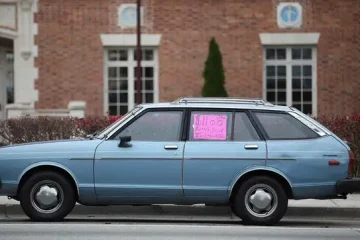Table of Contents
- Introduction
- Choosing the Right Printing Method
- Understanding Paper Types
- Design and Layout Considerations
- Binding Techniques
- Budgeting and Cost Management
- Printing Quality Control
- Distribution and Marketing Strategies
Introduction
Book printing is an art. Seeing your work in a tangible format is a significant milestone for aspiring authors. Understanding the nuances of book printing and selecting the proper techniques can transform your manuscript into a masterpiece. The journey from a manuscript to a printed book involves several crucial decisions and steps that can make or break the final product. Authors with the proper knowledge and preparation can successfully navigate the complexities of book printing and attain remarkable results.
Whether looking at digital printing for a limited quantity or offset printing for higher amounts, this guide will take you through the necessary tips and methods to prepare your book for printing. We provide all the information required to create a high-quality and engaging book, from choosing the right paper to learning various binding methods.
Choosing the Right Printing Method
Various printing techniques are suitable for different requirements. Offset printing is the best option for producing large quantities, saving costs, and delivering top-notch outcomes. It uses plates to replicate images on paper, making it ideal for large-scale printing needs. However, digital printing is more suitable for shorter print jobs, enabling quicker printing with on-demand capabilities. Every approach comes with advantages and drawbacks. Research indicates that knowing these distinctions can assist writers in making well-informed choices regarding their work. Consider factors like the quantity of prints needed, budget constraints, and the genre of the book when selecting a printing technique.
Understanding Paper Types
Paper quality can significantly impact the reader’s experience. Depending on the genre and target audience, the choice of the types of paper may vary between glossy, matte, or textured paper. The type of paper you select can convey different feelings and aesthetics, influencing how readers perceive your book. According to industry experts, the right paper choice complements the book’s design and enhances the reading experience. For example, glossy paper is often used for photo books and high-resolution images, providing a vibrant and sharp look. Matte paper, on the other hand, is ideal for novels and text-heavy content as it minimizes glare and is easier on the eyes. Textured paper adds a unique tactile feel, perfect for poetry or artistic books.
Types of Paper
- Glossy Paper: Best for photo books and high-resolution images. It enhances colors and detail, making visuals pop.
- Matte Paper: Ideal for novels and text-heavy content. It offers a smooth, non-reflective finish, reducing eye strain.
- Textured Paper: Adds a unique tactile feel, perfect for poetry or artistic books. It provides a distinct, premium appearance.
Design and Layout Considerations
The visual appeal of your book can either captivate or deter readers. Engaging covers and well-structured layouts play vital roles. Cover design is the first point of contact with potential readers, so it should encapsulate the essence of your book while being visually appealing. Online tools and professional designers can assist in creating compelling visuals that align with your story’s essence. Consider font choice, margin size, and chapter headings to create a seamless reading experience. A well-designed cover may attract readers, but a thoughtful and consistent layout will keep them engaged from the first page to the last.
Cover Design Tips
- Keep it simple and striking. Avoid cluttered designs and focus on a solid central image or theme.
- Use high-quality images or illustrations. Pixelated or low-resolution photos can detract from the professional look of your book.
- Ensure the title is readable. It should be clear and legible, even as a thumbnail online.
Binding Techniques
Binding holds your book together and adds to its durability and aesthetic. Choosing the proper binding technique can enhance the reader’s experience and increase the book’s longevity. From perfect binding to saddle stitching, each method offers different benefits. Perfect binding, commonly used for paperback books, provides a clean, professional look with a flat spine. Saddle stitching is suitable for shorter books or booklets, using staples along the crease for a simple and cost-effective solution. Hardcover binding offers durability and a premium feel, perfect for high-value books such as collectibles or special editions. Authors can delve into the specifics of various binding techniques for intricate details to choose what best suits their manuscript.
Common Binding Techniques
- Perfect Binding: This binding is excellent for softcover books. It offers a polished appearance with a straight spine that can display the book’s title and author through printing.
- Saddle Stitching: Suitable for shorter books or booklets. It uses suitable staples along the fold of the sheets for a simple and cost-effective solution.
- Hardcover Binding: Offers durability and a premium feel, perfect for high-value books such as collectibles or special editions. It often includes a dust jacket for added protection and appeal.
Budgeting and Cost Management
Understanding and managing printing costs is crucial. Factors like print run size, material quality, and shipping can influence the budget. Planning and exploring cost-effective options can help you stay within budget without compromising quality. Consider requesting quotes from multiple printing services to compare costs and find the best deal. Additionally, be mindful of hidden costs such as setup fees, shipping charges, and taxes. By carefully planning your budget, you can allocate resources effectively and avoid unexpected expenses that might derail your project.
Printing Quality Control
Making sure the result aligns with your expectations is crucial. Consistent quality inspections while printing can help avoid problems like misalignment and color discrepancies. Authors should familiarize themselves with quality control procedures to prevent dissatisfaction. Ask for samples before the entire print run to ensure the quality matches your standards. This step is crucial as it allows you to review the print job, check for errors, and make necessary adjustments before committing to a more extensive print run. Consistent quality control helps maintain high standards and ensures that every copy of your book is perfect.
Distribution and Marketing Strategies
Once printed, getting your book into readers’ hands is the next challenge. Effective distribution channels and strategic marketing can significantly impact book sales. Utilizing social media, attending book fairs, and leveraging online platforms are ways to boost visibility and reach. Social media sites are great resources for growing a fan base and interacting with possible readers. Attending book fairs and literary events offers the chance to connect with professionals in the industry and showcase your work to a larger audience. Interacting with your audience through book signings or online readings can help establish a dedicated group of readers. Engaging with your readers personally can build a strong bond and encourage them to spread the word.
Embarking on the journey of book printing requires careful planning and informed choices. By understanding the critical elements of the process, aspiring authors can transform their manuscripts into well-crafted books that captivate and engage readers. Every stage, from selecting the printing process to overseeing quality assurance, is crucial for the printed book’s success. By committing yourself and focusing on the specifics, your exceptional writing can achieve maximum success and be showcased on bookshelves worldwide.



